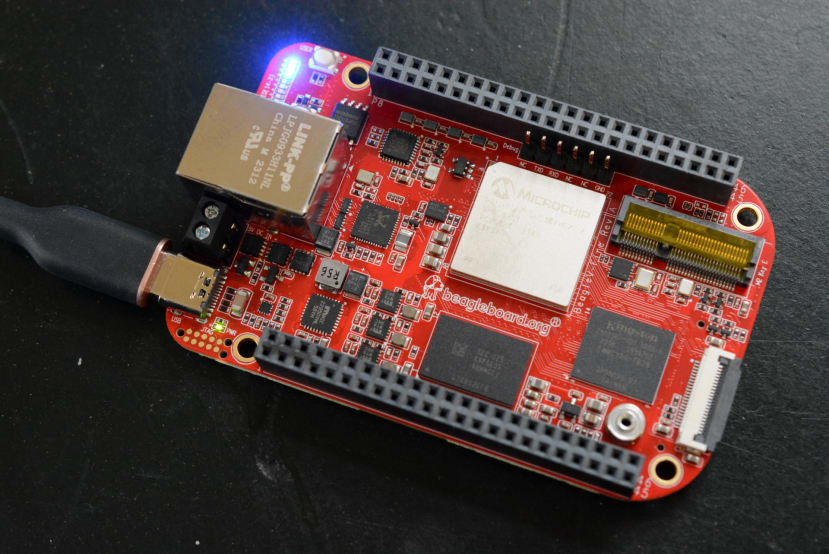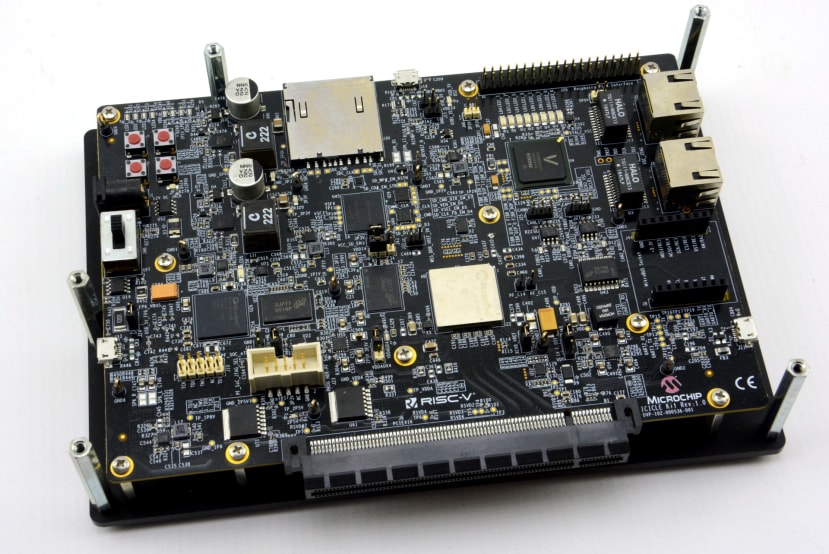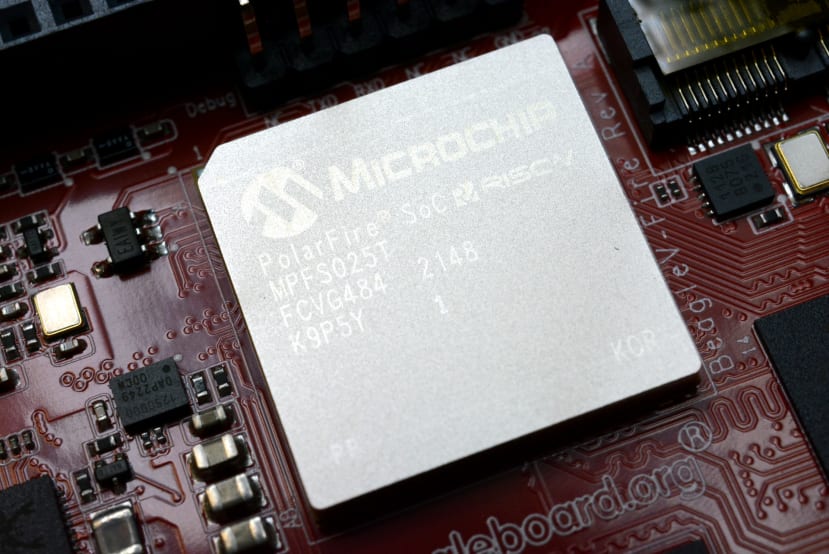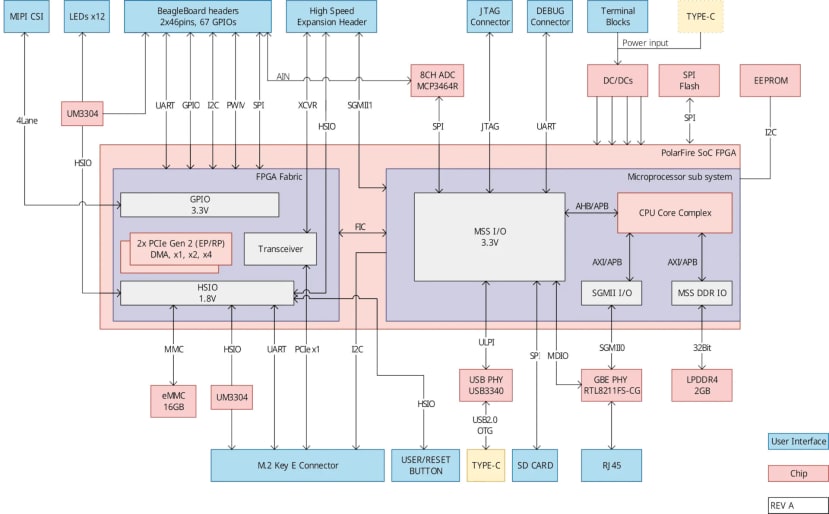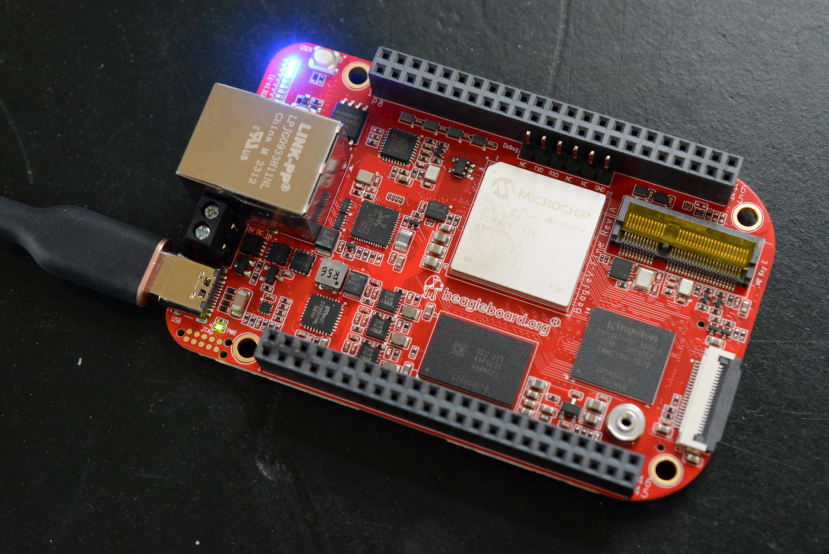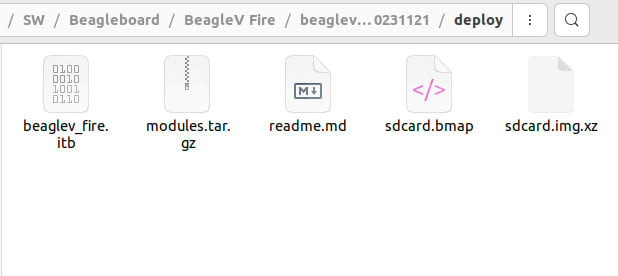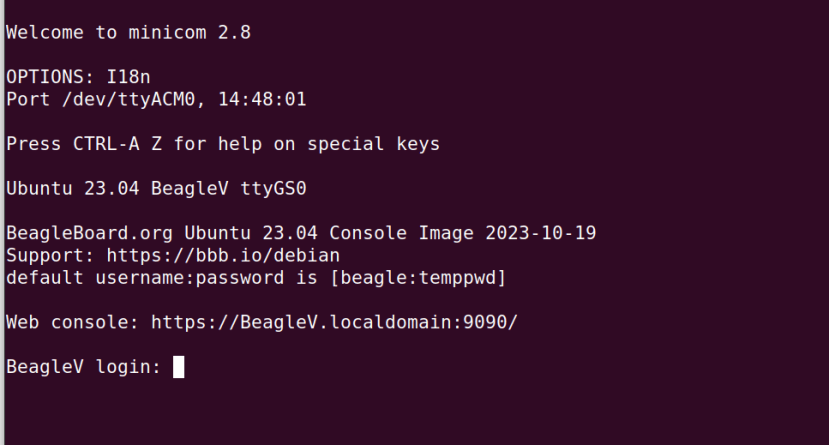A Closer Look at BeagleV Fire
Follow articleHow do you feel about this article? Help us to provide better content for you.
Thank you! Your feedback has been received.
There was a problem submitting your feedback, please try again later.
What do you think of this article?
BeagleBone form factor SBC boasts PolarFire SoC with 5-core RISC-V + FPGA fabric.
BeagleV Fire (273-0243) comes hot on the heels of BeagleV Ahead, which we previously took a look and went through basic setup (268-6957) . Both boards share the same BeagleBone form factor and expansion headers with plenty of I/O. However, the major difference being that where the Ahead board features a T-Head TH1520 quad-core RISC-V system-on-chip (SoC), the Fire board instead has a Microchip PolarFire SoC which combines a RISC-V CPU complex with an FPGA fabric.
Background
Microchip PolarFire SoC Icicle.
So many things in technology are a question of trade-offs, such as cost vs. performance, performance vs. flexibility and speed vs. power consumption. In this way, CPUs and FPGAs each offer their own distinct benefits, such as CPUs being easy to develop for and generally being more flexible, while FPGAs can offer significant performance gains for certain tasks, in terms of speed, throughput and energy consumption — at a cost of being harder to develop for and less flexible.
It is, of course possible to implement a “soft” CPU using an FPGA and then to attach custom logic to this for accelerated and/or low-power processing for specific tasks. However, a soft CPU will run at a fraction of the speed it would if implemented using an ASIC process, and likely while consuming more energy. Industry’s answer to this has been the SoC FPGA, which combines a “hardened” CPU (ASIC) with an FPGA fabric in the same package.
Up until relatively recently most SoC FPGA devices have integrated an Arm processor or perhaps x86. However, the Microchip PolarFire SoC integrates RISC-V CPU cores with an FPGA fabric, plus system, interrupt and DDR memory controllers, along with various interfaces etc.
The first board to be based around this device was the Microchip PolarFire SoC Icicle, seen pictured above. This launched back in 2020 and is a larger and somewhat more expensive board.
SiFive HiFive Unleashed + PolarFire FPGA expansion board.
Icicle was also predated by a kind of early access solution for PolarFire SoC, based on a SiFive HiFive Unleashed SBC plus PolarFire FPGA expansion board. A combination which cost around thirty times the price of a BeagleV Fire board! This was used in 2019 to construct a RISC-V desktop PC complete with a GPU, back when there was very limited Linux-capable RISC-V silicon.
So as we can see, in the space of a few years we’ve gone from a costly RISC-V SBC plus FPGA expansion board solution to a far more convenient and cost-effective first RISC-V SoC FPGA-based SBC, then to a product which is yet smaller again and at an even more accessible price point.
For an introduction to RISC-V, see the article, RISC-V: An Open Instruction Set Architecture.
BeagleV Fire
Features and specifications
The BeagleV Fire board features:
- MPFS025T-FCVG484E PolarFire SoC
- 2GB LPDDR4 RAM
- 16GB eMMC + Micro SD storage
- 2.4/5GHz WiFi + Bluetooth
- Gigabit Ethernet
- USB C (power, connectivity and flashing)
- P8/P9 cape headers, plus SYZYGY high-speed connector
- 22pin MIPI CSI Camera connectors
- PCIe M.2 Key E connector
The Microchip MPFS025T FPGA SoC has a 4x application + 1x monitor core CPU complex which is clocked at 625MHz — which is much lower than the clock speed of the BeagleV Ahead SoC at 1.85GHz. However, the clue is in the name and the PolarFire SoC is targeted at more specialist, low-power applications, with additional heavy lifting made possible courtesy of its FPGA fabric, which adds 23K of logic elements, 8 Mbits total RAM, and 8 each user DLLs/PLLs, amongst other features. These resources can be used to implement high-performance custom hardware functionality which is tightly coupled with the RISC-V processor subsystem.
Other notable differences include the lack of an HDMI output and instead a SYZYGY high-speed connector, which is a next-generation FPGA connectivity standard that can be used to integrate custom peripherals and to prototype using off-the-shelf peripherals, in a manner similar to low-speed Pmod modules. Such peripherals might include those for robotics, software-defined radio, data acquisition and machine vision, to name but a few.
The final major difference being the provision of a PCIe M.2 Key E connector, which is typically used for network interface cards, but could equally be custom PCIe peripherals.
The BeagleV Fire has achieved Open Source Hardware Association (OSHWA) certification, UID US002572, with a hardware design that is published under the permissive CC BY 4.0 licence. The PCB EDA files, issue tracker and PDF schematics are all made available via the project repository.
Software support
Going to the distros section of the BeagleBoard website we see that at the time of writing Ubuntu is the only officially supported Linux distribution. Although the adventurous may be able to build a working SD card image using something like Yocto or Buildroot.
Setting up
Hardware
The box contains only the SBC itself and a USB-C power supply is required, or alternatively a 5VDC power supply can be connected to the screw terminals. A suitable USB cable will also be required if you want to connect it up to a PC in order to flash the onboard eMMC storage.
Software
At the time of writing the Quick Start seems to have an empty section for flashing the onboard eMMC. We downloaded the Ubuntu image and the contents of the extracted ZIP file can be seen above. This includes a readme.md file which explains how to uncompress and flash the sdcard.img.xz file to a Micro SD card.
However, it turns out that the BeagleV Fire came supplied with an O/S already flashed to eMMC.
First login
When cabled via USB to a laptop running Ubuntu, the BeagleV Fire USB serial port enumerated as /dev/ttyACM0, so we connected to this with:
$ minicom -D /dev/ttyACM0The port communications parameters are 57,600 N81.
As with BeagleV Ahead, the default username and password are beagle and temppwd.
Upon connecting an Ethernet cable the BeagleV obtained an IP address via DHCP and then we could also log in from our laptop using SSH with:
$ ssh beagle@beaglev.localExecuting the same three commands that we did on the BeagleV Ahead, we could see that this time we were running a much more recent Linux kernel and again with 4x CPU cores available, albeit with a different RISC-V architecture instruction set variant.
Both BeagleV boards have SoCs with “rv64imafdc”, which means:
- RISC-V 64-bit
- Integer
- Integer Multiplication and Division
- Atomics
- Single-Precision Floating-Point
- Double-Precision Floating-Point
- 16-bit Compressed Instructions
Whereas the Ahead board’s SoC additionally benefits from:
- Vector Extensions
- Standard Supervisor-Level ISA Extension
Hence for certain applications, the BeagleV Ahead will have CPU performance benefits beyond just having a faster clock speed.
There are a number of demos and tutorials provided, which include how to set up the Microchip FPGA tools and an introduction to the platform gateware (FPGA implementation) design.
One tutorial shows how to retrieve the configured gateware version and above we can see that we have default cape support and M.2 PCIe support. Which hints at a far greater level of hardware flexibility than would be found on SoCs which don’t have the benefit of FPGA fabric.
First impressions
Much like its sibling, BeagleV Ahead, the BeagleV Fire is a smart little board and brings the powerful combination of a RISC-V CPU complex plus FPGA fabric, at an affordable price point. Sure, the CPU by itself is not as powerful as that of BeagleV Ahead, but this is very much by design and powerful, efficient solutions may be developed for applications such as data acquisition, signal processing, robotics and more, which target computationally intensive tasks to the FPGA fabric.
As with other BeagleBone form factor SBCs, the BeagleV Ahead may be extended via capes and with expansion pins routed via the FPGA fabric this will open up many more possibilities. As will the high-speed SYZYGY connector which is also FPGA-connected.
BeagleV Ahead should provide an excellent platform for low-power, high-performance applications and those with hard real-time requirements. It should also provide a fun platform for FPGA experimentation and learning how to interface custom blocks with a RISC-V CPU.


